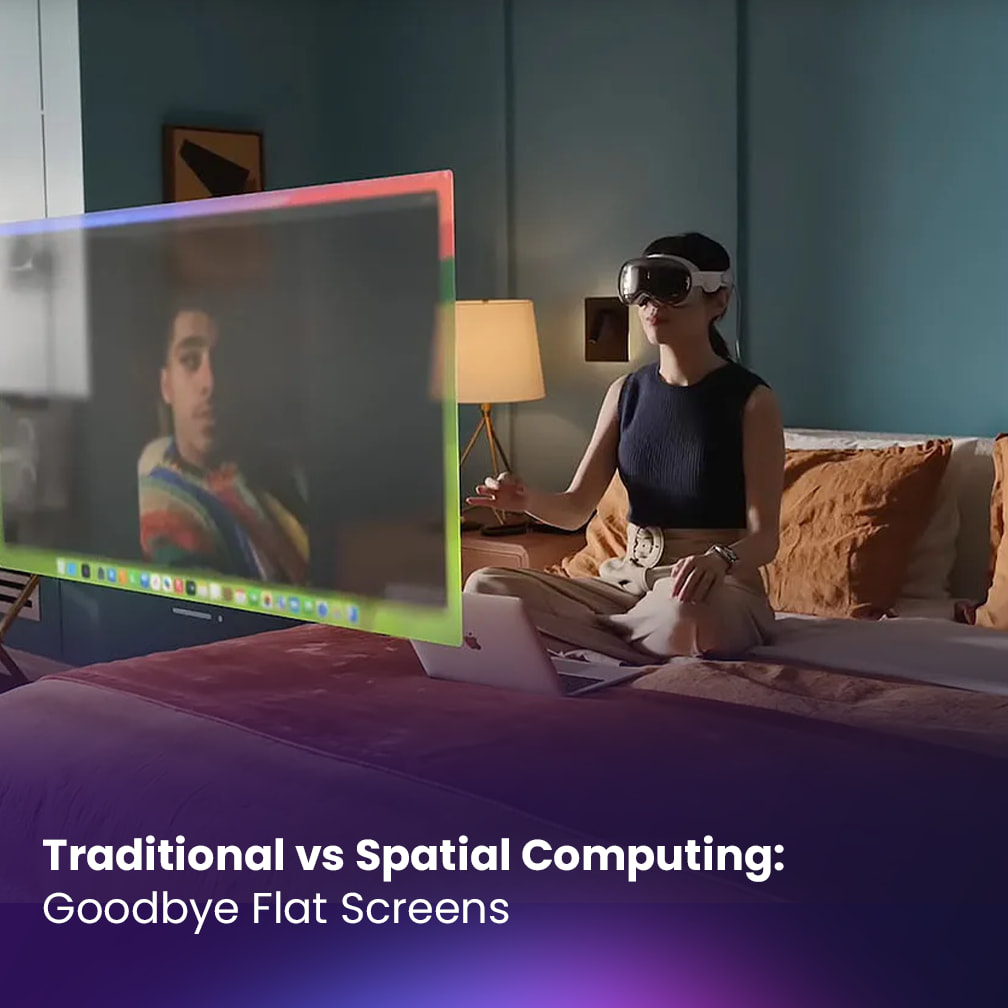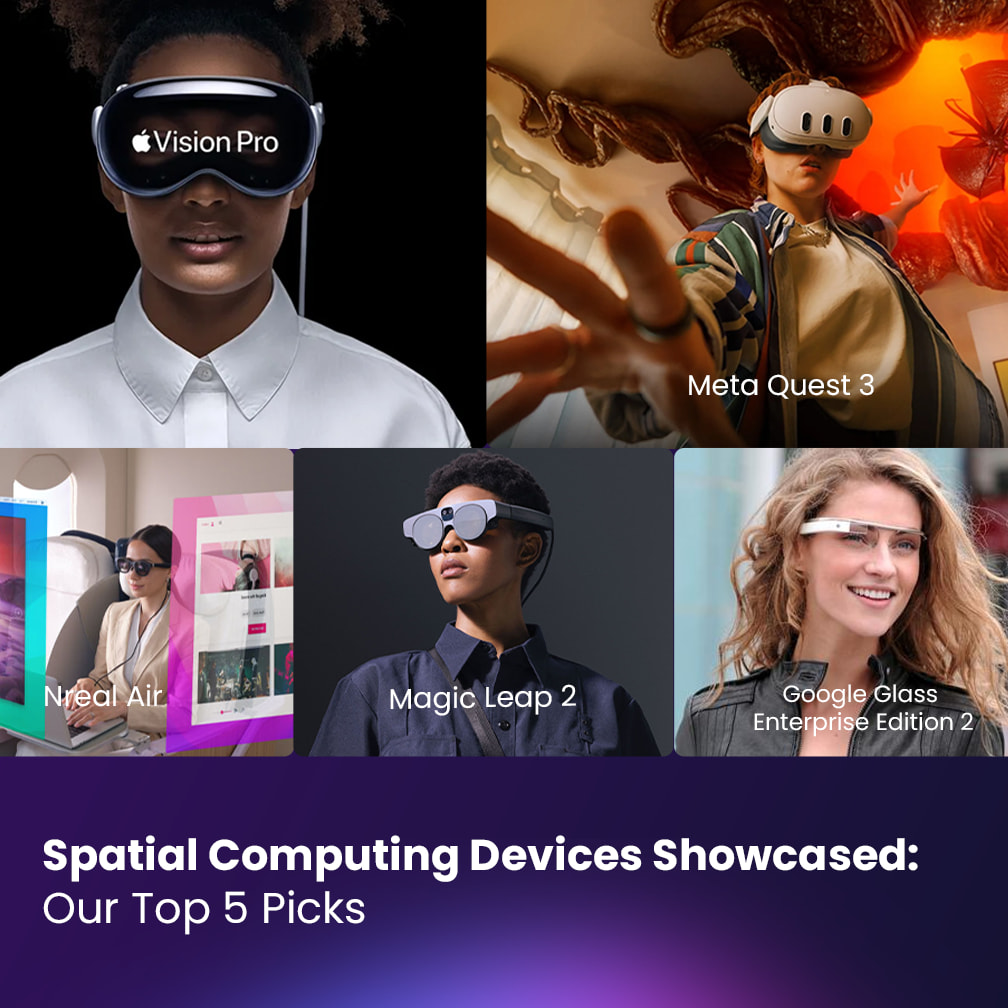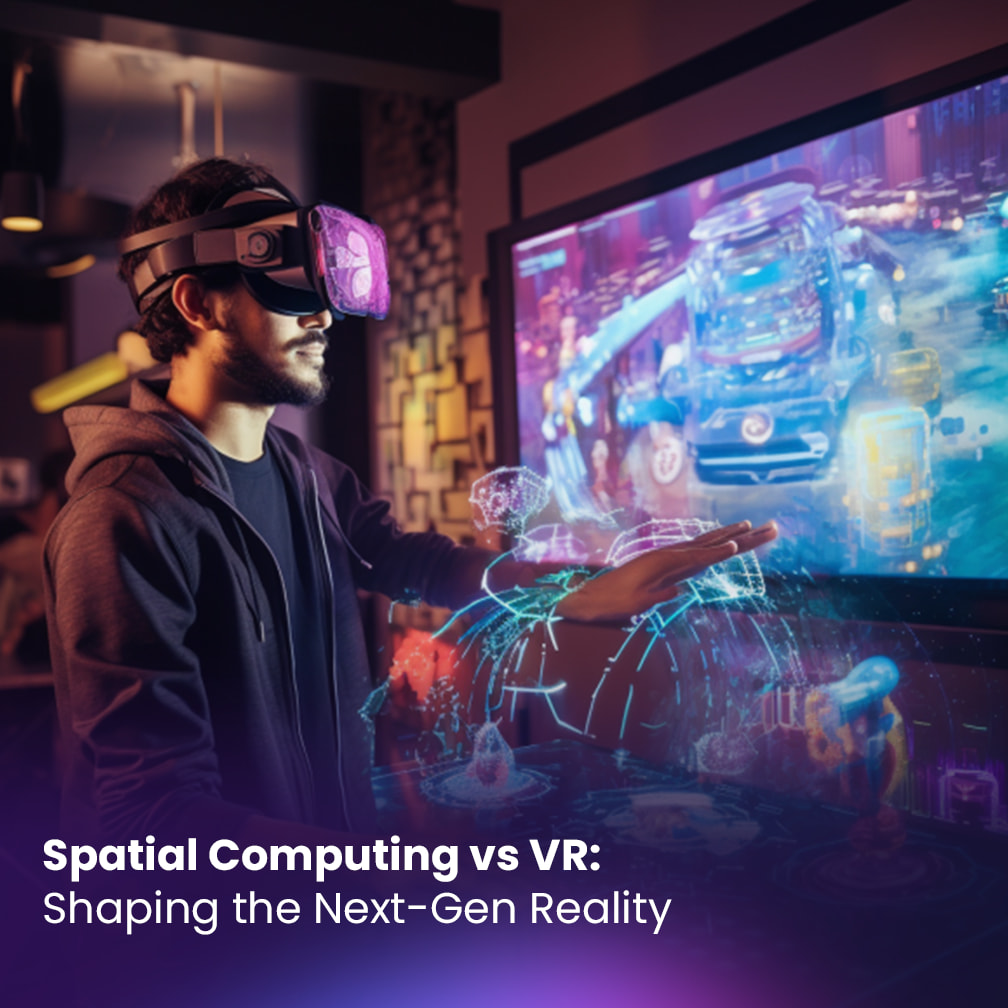Traditional vs Spatial Computing: Goodbye Flat Screens

Estimated reading time: 4 minutes
Remember the days of clunky computer monitors and clicky keyboards? Well, dust off your nostalgia goggles, because those traditional relics of the past are about to be replaced by something much more exciting: spatial computing.
Stage Meta, a visionary company at the forefront of this revolution, is betting big on a future where traditional interfaces fade into obscurity, replaced by the immersive and interactive world of spatial computing.
But before you toss your laptop out the window, let’s take a moment to compare and contrast these two worlds.
Table of contents
Flat vs Immersive: A World of Difference
Traditional interfaces are flat, static, and confined to our screens. It’s like trying to explore the Grand Canyon through a peephole – restrictive and underwhelming.
Screens revolutionized how we engage with the digital world, rapidly expanding from desktops to smartphones and transforming daily information consumption. Yet despite ongoing size and resolution gains, the separation of confined glowing portals from our physical environment imposes innate interaction limits.
Spatial computing promises to at last collapse this divide by situating data layers mapped onto real-world architecture. Let’s examine why pioneers like Apple argue immersed reality augmentation spells the end for traditional interfaces.
Spatial computing, however, throws open the doors to a whole new dimension. Imagine interacting with information and experiences in a three-dimensional space, just like you do in the real world. It’s like stepping into your favorite movie or video game, and the possibilities are endless!
From Passive Viewing to Active Participation
Traditional interfaces are designed for passive consumption. We sit back and watch, absorbing information like sponges.
Spatial computing, on the other hand, demands our active participation. We’re no longer mere spectators; we’re active players in this virtual world. Imagine manipulating objects, collaborating with others, and even creating new things – the only limit is your imagination!
Limits vs. Possibilities: A Universe of Change
Traditional interfaces are limited by the size of our screens and the capabilities of our devices. It’s like trying to paint the Mona Lisa with a crayon.
Spatial computing, however, breaks free from these constraints. With a vast virtual canvas at our disposal, we can create anything we can imagine. Imagine designing entire cities, building complex machines, or even composing symphonies – the possibilities are truly boundless!
Apple Bets Big on Spatial Being the Next Megashift
It’s unsurprising then that heavyweights like Apple aggressively pursue spatial solutions having hit innovation dead-ends stretching smartphones and tablets thinner forever. Their first proper augmented reality eyewear dubbed Apple Vision represents a billion-dollar gateway to post-screen cognitive interfaces.
By packing depth sensors and computing brawn to construct detailed 3D maps, Vision headsets understand surrounding surfaces and placement of real objects to anchor digital content naturally belying physical constraints. This Spatial intelligence enables tricking user brains with illusion magic rendering part-fictional realities.
Apple envisions VR/AR glasses someday replacing iPhones as mainstream mixed reality comes of age thanks to environments growing readable for devices. Users could digitally redraw living room layouts on the fly or access location-based spatial computing worlds mapping interactive beings into parks for next-level hide and seek!
Stage Meta: Leading the Charge
Stage Meta simplifies spatial computing, guiding users on how to purchase Teleport Plaque Address (TPA) to unlock its full potential. As technology evolves, Stage Meta is poised to play a leading role in shaping the future of spatial computing.
And with the much-anticipated arrival of the Apple Vision Pro, spatial computing is about to become even more accessible to the masses. This sleek and powerful headset promises to usher in a new era of immersive computing, making the world of Stage Meta even more exciting.
FAQs About the Inexorable Spatial Era
Let’s tackle some common questions surrounding this monumental computing phase change:
When does the spatial transition reach critical mass?
Looking at prior platform shifts, likely the next 5-10 years sees inflection lifting commercial mixed reality usages followed by ubiquity. Apple’s heavy spatial redirection greatly accelerates things.
What are the constraints holding widespread adoption back?
Core hardware and connectivity specs although rapidly improving. Areas like battery densities, 5G rollout and wearables form factors must mature more alongside UI development tools to drive developer buy-in.
Does spatial tech only impact entertainment?
No way. Spatial computing will reform healthcare, design, manufacturing, field training and retail sectors through more intuitive data visualization mapped onto environments people inhabit.
Last thoughts Traditional vs Spatial Computing: Are You Ready?
Traditional vs Spatial Computing, the writing is on the wall, folks: traditional interfaces are on their way out. Spatial computing is the future, a future filled with boundless possibilities and immersive experiences.
So, are you ready to step out of the flat screen and into the Spatial World? Stage Meta is waiting for you, and the future of computing is within your reach. It’s time to embrace the new frontier and experience the world like never before
For more information and to dive deeper into the boundless possibilities of Stage Meta and TPA, visit Stage Meta’s Homepage. The future is now, and it awaits you.
Welcome to the new age of Spatial Computing. Welcome to Stage Meta.








